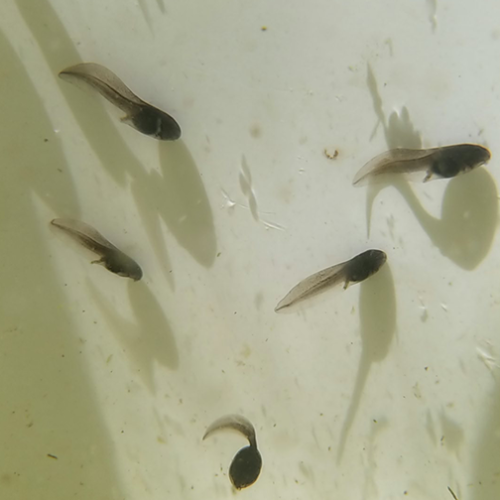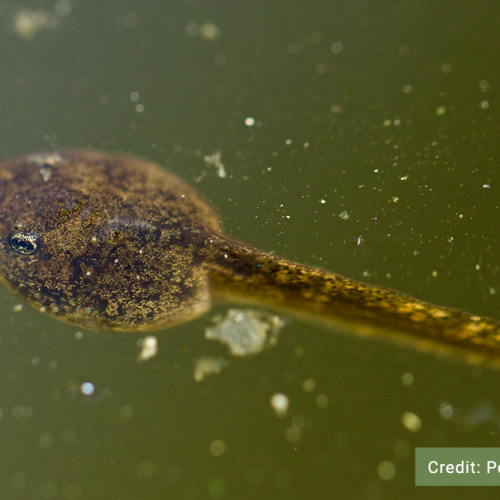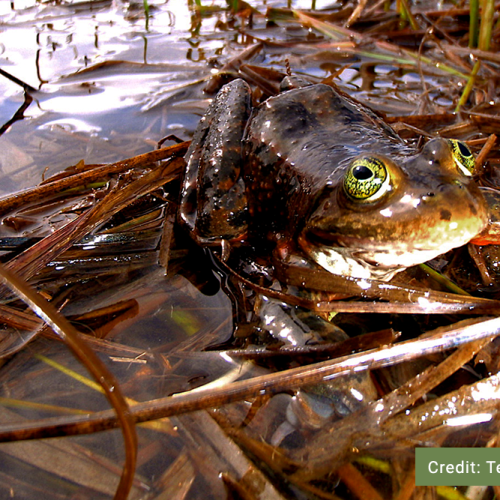Credit: Pourya Sardari
Oregon Spotted Frog
Rana pretiosa
Description
Oregon Spotted Frog tadpoles have long tails with a large tail fin. Their bodies are tan, light brown, or green with gold and bronze flecking, with dark spots or flecking on the tail fin and a white-cream belly. Tadpoles can reach up to 10 cm in length before metamorphosis.
Listen to the Indigenous words for “frog” here!
Oregon Spotted Frog Call
The call of the Oregon Spotted Frog is a series of short grunts or clucks that build in intensity, lasting up to 10 seconds. It may resemble a woodpecker drumming in the distance. It is not known if the call of the Columbia Spotted Frog differs substantially from the Oregon Spotted Frog.
The Oregon Spotted Frog does not have an amplifying vocal sac, so their calls are quieter than other frog species.
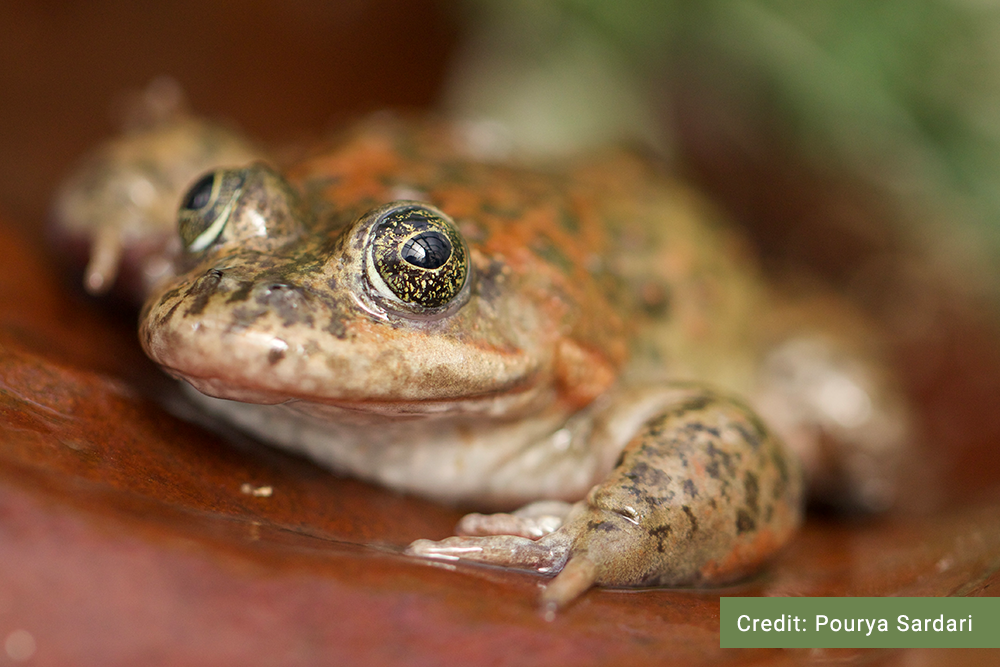
Great Basin Spadefoot Call
The call of the Oregon Spotted Frog is a series of short grunts or clucks that build in intensity, lasting up to 10 seconds. It may resemble a woodpecker drumming in the distance. It is not known if the call of the Columbia Spotted Frog differs substantially from the Oregon Spotted Frog.
The Oregon Spotted Frog does not have an amplifying vocal sac, so their calls are quieter than other frog species.
Similar Species
There are two species of Spotted Frog in British Columbia: the Columbia Spotted Frog and the Oregon Spotted Frog. The Columbia Spotted Frog has a larger head than the Oregon Spotted Frog, and in Canada, Columbia Spotted Frogs do not have mottling at the throat; although some populations in the United States do. The distributions of the Columbia Spotted Frog and the Oregon Spotted Frog do not overlap in British Columbia, so the best way to distinguish these two similar species is by location.
The Oregon Spotted Frog also resembles the Northern Red-legged Frog; however, the latter has incomplete webbing on the toes and does not have upturned eyes. Red-legged Frogs are always yellow on the belly with red on the underside of the hind legs. The Oregon Spotted Frog also may resemble the Northern Leopard Frog, but the Leopard Frog has much more distinct spots surrounded by light rings. The other true frogs in its range do not have spots.
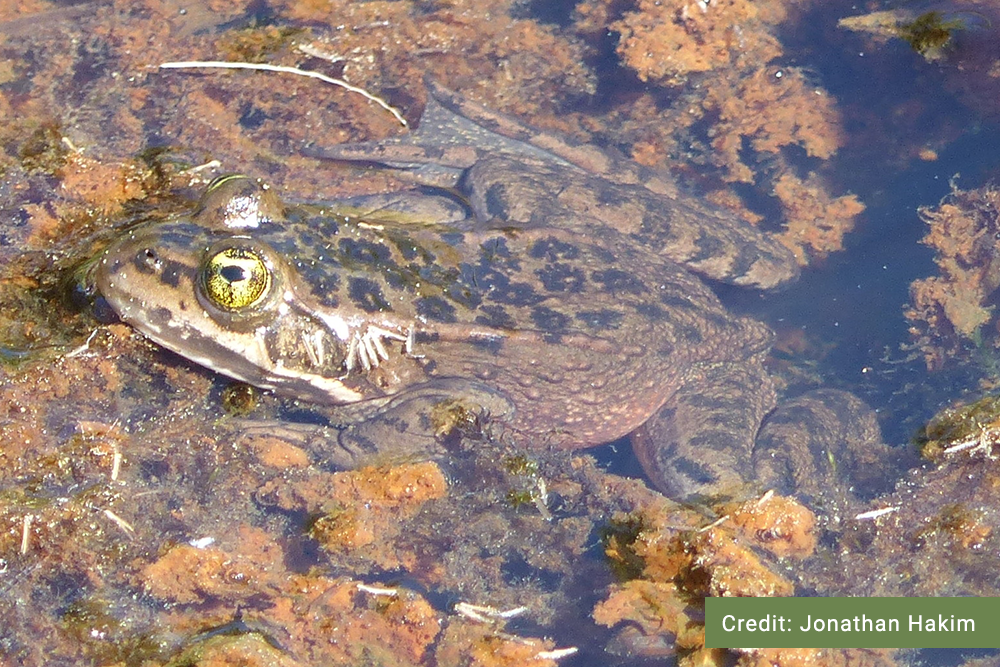
Oregon Spotted Frog

Columbia Spotted Frog
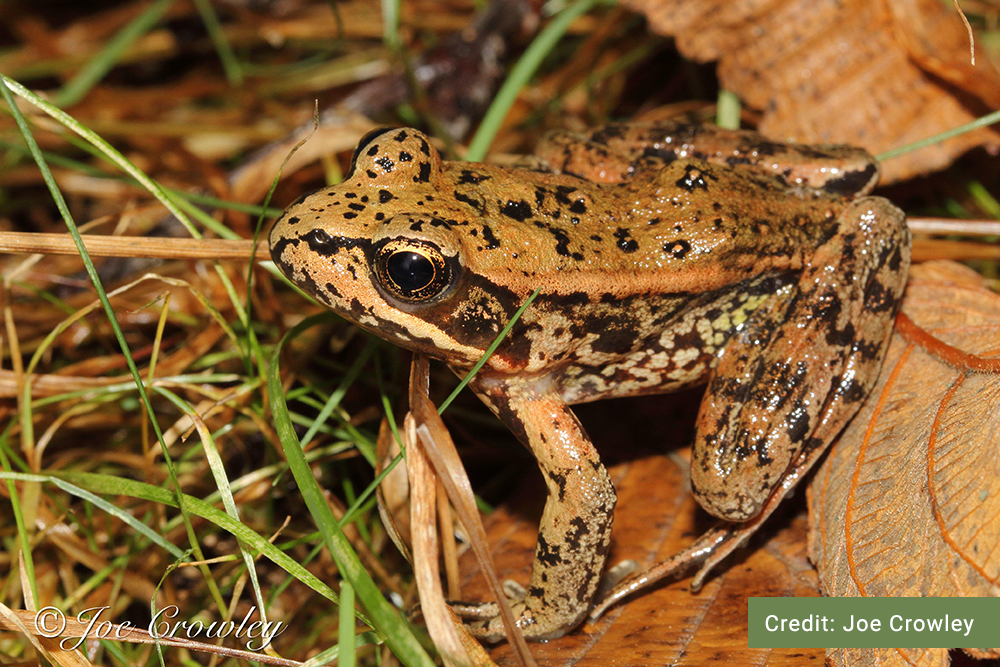
Northern Red-legged Frog
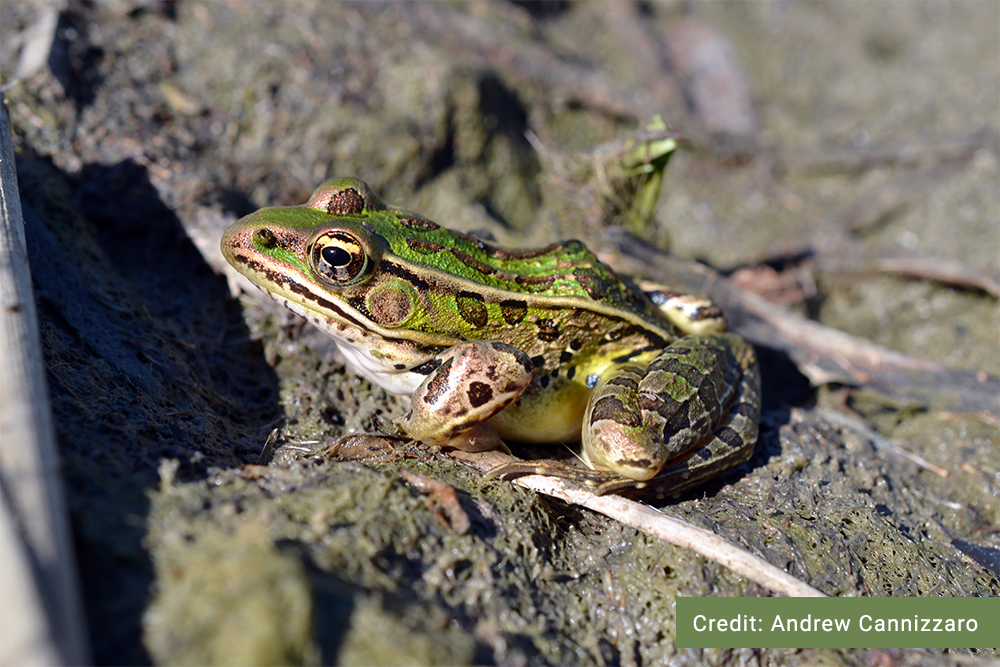
Northern Leopard Frog
Distribution
Habitat
Reproduction
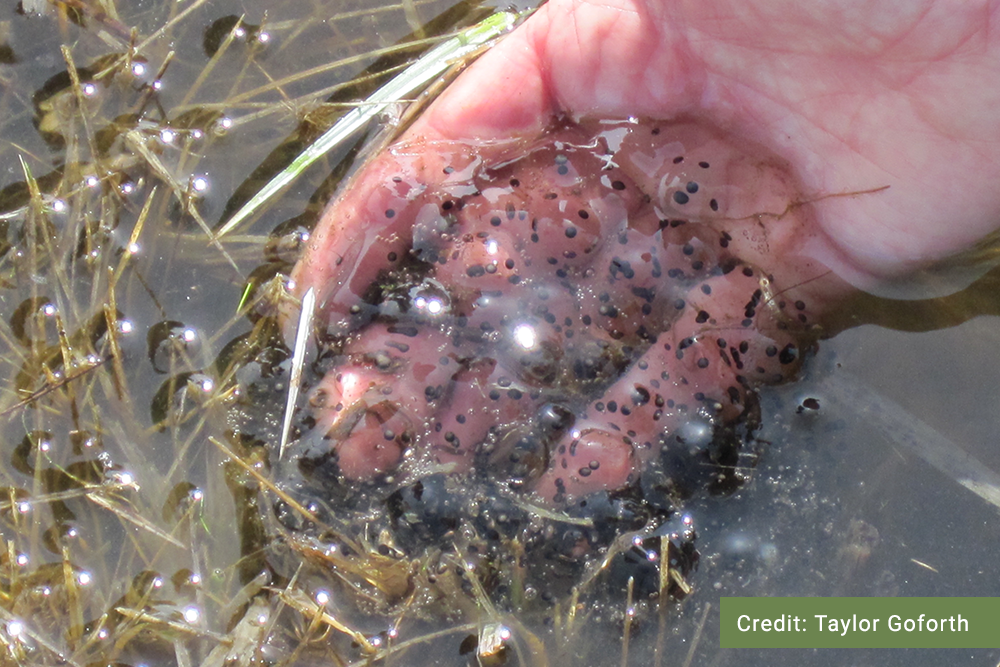
Diet

Conservation Status
Global: G2 (2013)
COSEWIC: E (2011)
SARA:1-E (2003)
Provincial: S1 (2016)
BC List: Red
Learn more about conservation status rankings here
Threats
Did You Know?
Fact #1
Fact #2
Fact #3
The Oregon Spotted Frog is the only organism that has received an “emergency listing” as an endangered species in Canada.
Species Account Author: Marcus Atkins
Available:https://a100.gov.bc.ca/pub/eswp/ (accessed May 21, 2021).
B.C. Conservation Data Centre. 2011. Species Summary: Rana pretiosa. B.C. Minist. of Environment.
Available:https://a100.gov.bc.ca/pub/eswp/ (accessed May 21, 2021).
COSEWIC. 2011c. COSEWIC assessment and status report on the Oregon Spotted Frog Rana pretiosa in Canada. Committee on the Status of Endangered Wildlife in Canada. Ottawa. xi + 47 pp.
Environment Canada. 2015g. Recovery Strategy for the Oregon Spotted Frog (Rana pretiosa) in Canada. Species at Risk Act Recovery Strategy Series. Environment Canada, Ottawa. 23 pp. + Annex.
Matsuda, Brent, David M. Green, and Patrick T. Gregory. 2006. Amphibians and Reptiles of British Columbia. Handbook. Royal BC Museum, Victoria.
https://linnet.geog.ubc.ca/efauna/Atlas/Atlas.aspx?sciname=Rana%20pretiosa&ilifeform=1
https://www.naturewatch.ca/frogwatch/oregon-spotted-frog/#:~:text=Description%3A%20The%20Spotted%20Frog%20is,the%20eyes%20are%20slightly%20upturned.
http://www.canadianherpetology.ca/species/species_page.html?cname=Oregon%20Spotted%20Frog
http://a100.gov.bc.ca/pub/eirs/finishDownloadDocument.do?subdocumentId=1025




